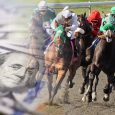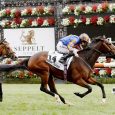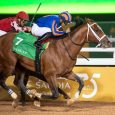Giant Impact on Aqueduct, Gulfstream Jockey Colonies
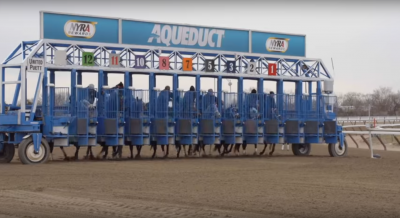 A brutally cold and stormy winter has been a major weather story in the northern tier of the country through the first two weeks of 2018. Not enough, however, has been written about how the bad winter of 2017-18 in New York has resulted in a ripple effect on the sport of horseracing, particularly when it comes to the jockey colonies of two of this season’s most prominent racetracks — Aqueduct and Gulfstream Park.
A brutally cold and stormy winter has been a major weather story in the northern tier of the country through the first two weeks of 2018. Not enough, however, has been written about how the bad winter of 2017-18 in New York has resulted in a ripple effect on the sport of horseracing, particularly when it comes to the jockey colonies of two of this season’s most prominent racetracks — Aqueduct and Gulfstream Park.
Through Thursday, Jan. 18, Aqueduct had completed only four full race cards so far in the new year. The Big A has been able to race on far fewer days than they’ve been forced to cancel so far this year, with a total of seven race cards lost — all or in part — in January (eight cancellations since Dec. 31). In the midst of losing all of those races and racing dates, New York winter racing actually ended up losing something far more serious — its two best jockeys.
Each fall there is an expected exodus from New York to Florida for horses and horsemen, including top veteran jockeys who not only flee New York for the warmer climate of Gulfstream Park for the winter, but also for the opportunity to ride turf horses and stakes horses and keep business strong and steady amongst the top trainers who relocate south for the season. John Velazquez, Javier Castellano and current Gulfstream leading rider Luis Saez are among this group of jockeys who’ve circled Gulfstream’s dates on their winter calendars long ago.
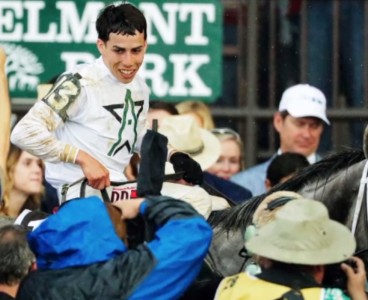
Irad Ortiz Jr.
But top jockeys ride each winter at Aqueduct, too. Purses are very high at Aqueduct and many racing fans don’t realize that the Aqueduct winter purses are significantly higher at every non-stakes class level than the corresponding races run at the higher-profile, but lower-paying, Gulfstream meet. This means that leading riders — not just locally, but on a national level — such as Irad Ortiz and Jose Ortiz always could be counted on to “stay at home” in New York for the winter. The Ortiz brothers would then headline the Aqueduct jockey colony, winning at gaudy win percentages and racking up massive paychecks all winter long until the horses and horsemen started returning to New York after April 1.
That’s the way it was expected to go this year too, but Mother Nature had other plans.
First came Jose Ortiz, who took a planned December hiatus from the saddle in order to have some minor surgery done to clean up his knee. At the same time Jose planned his comeback to riding in early January, Aqueduct was hit with sub-freezing and, in some instances, sub-zero-degree temperatures too inhospitable for his healing knee. Thus, a decision was made by Jose to ride the winter in rehab-friendly Florida. And just like that, Aqueduct had lost its No. 1 leading rider the last two winter seasons to Gulfstream.
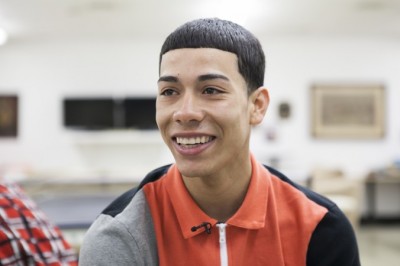
Jose Ortiz (photo via www.theepochtimes.com)
Then came Irad Ortiz, New York’s other leading rider. With eight cancelled Aqueduct race dates from Dec. 31 through Jan. 12, Irad could no longer just sit around New York waiting for the weather to improve, while losing mounts and money on a daily basis. Irad took his tack and his 317 victories from 2017 and fled Aqueduct for Gulfstream starting on Jan. 5. He plans to stay in Florida to ride the rest of the winter.
The next to go is expected to be Manny Franco, according to his agent Angel Cordero, who thinks he can do better business at Gulfstream this winter than up in the frozen North.
The impact that the move of the the Ortiz brothers to Florida this season has already been enormous. Mounts on favorites and low-odds contenders that would have gone elsewhere are rapidly being swallowed up by Irad and Jose more and more each day. Both brothers like to ride every race and rarely turn down mounts, even in bottom claiming and maiden events.
Irad has already won five stakes races at the Gulfstream meet, including the Grade 3 Rampart and the Grade 3 My Charmer. He has landed in the Gulfsteam jock’s room with a splash, winning 16 races from his first 58 mounts for a 28-percent win rate and 57-percent in-the-money (ITM) rate — astounding figures when you consider Gulfstream’s field sizes and level of competition.
Jose, meanwhile, has already climbed into a tie for fifth in the Gulfstream jockey standings through Jan. 17 with 21 wins. His solid percentages of 21-percent win, 43-percent ITM will only increase as he returns to top form off his December surgery.
So far, the biggest loser from all of this has been Javier Castellano, whose business has been hurt because he has many of the same clients as the Ortiz brothers, including perennial top trainer Chad Brown. Castellano has only 11 wins from 80 mounts so far (14 percent).
Two other top riders off to good starts at Gulfstream this season who figure to suffer are Emisael Jaramillo and Edgard Zayas, currently third and fourth in the standings with 28 and 25 wins, respectively. Most of Jaramillo’s and Zayas winners come from Florida connections and claimers. They will lose ground in the first category anyway, as the complexion of the Gulfstream meet changes dramatically to better competition from now until April 1. But, now, they will also lose ground in the second category (claimers), as trainers snap up the Ortiz bros.
Who are the winners in all of this, besides Jose and Irad? The answer to that question is every single guy left remaining in the Aqueduct jock’s room. When the cat’s away the mice will play, and while the New York bettors and racing fans lose, a large group of marginal journeymen jockeys left riding at Aqueduct will be the winners.
The current leading Aqueduct rider for 2018 is—hold on to your hat — Dylan Davis with six wins and only a 12-percent win rate (22 percent ITM). Startlingly, Davis’s win rate leads all regular riders.
Davis will now battle it out for Aqueduct winter leading jockey honors with guys like Eric Cancel (10 percent wins, 23 percent ITM), Kendrick Carmouche (2-for-48, four percent) and Trevor McCarthy (3-for-47, six percent), who is looking smarter and smarter every day since deciding to relocate from the mid-Atlantic this winter.
It’s amazing what the domino-effect impact can be simply from bad weather causing two leading riders to change their plans and switch circuits for a few months. It will be fun to see how things eventually shake out, but one thing is certain: Aqueduct’s loss will be Gulfstream’s gain this season.

